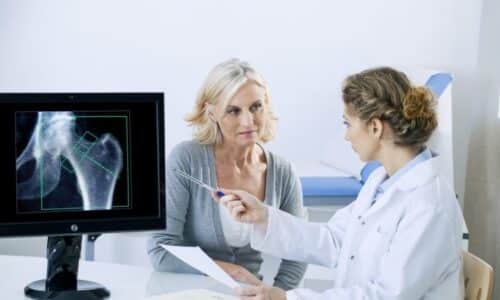Overview of Osteoporosis |
How does osteoporosis look from the inside of the body? Dr. Deepa Sharma, Family Medicine Physician with Baptist Health Primary Care, explains with a 3D image what happens when the bones become more fragile and porous.
Transcript
So dr. Sharma tell us what we’re looking at here so this is an example of the bony matrix and osteoporosis we’re looking here at the joints of the hip and specifically the femur and I’m not sure if you can tell looking in closely that there’s a porous bone just like you said osteoporosis means literally porous bone and what happens in that situation is when bones become porous they become more fragile they’re more weak and they are easily susceptible to fracture and that’s really what one of our biggest concerns as well we see this is the femur but it can also happen in the spine is this true yes this is correct it can occur in the spine this images of course of the femur but it does affect the main skeletal and we do worry about the hip and the spine more so than the rest so how does someone get osteoporosis is more of an age factor does it happen – let’s say women more than men so the development of osteoporosis is actually somewhat multifactorial so what I usually recommend is thinking about the bonus living tissue and so the bones are always active they’re developing and they’re being destroyed and so there are a lot of different reasons that can disrupt that balance certainly minerals that you need calcium vitamin D are important to help develop bone but certainly certain medications such as steroids can increase the deterioration of the bone and so when we see a imbalance where there is more loss of bone than the development of bone that’s when we really see the development of osteoporosis and they call it a silent disease is this because you you’re not aware that you’re losing that balance in the bone so certainly a silent disease is a great way of describing this condition most of the time a person won’t know that they actually have osteoporosis until they have their first fracture and so certainly we don’t want to let it get to that point as I mentioned earlier prevention is very important it’s something that I believe strongly in and so having that annual exam with your you know primary care physician being you know to discuss with screening what risks are there can help identify and that like this is silent before it becomes a problem you








